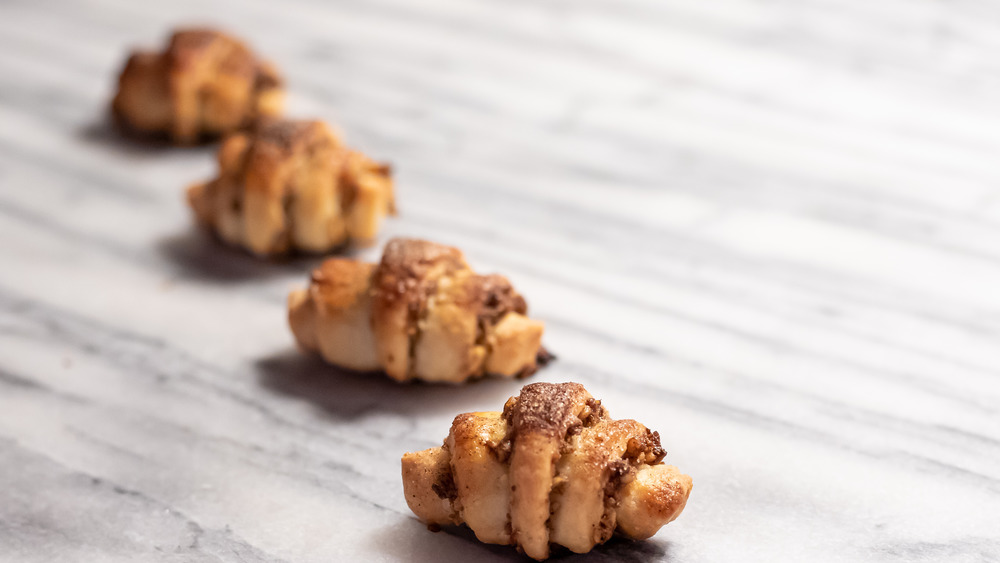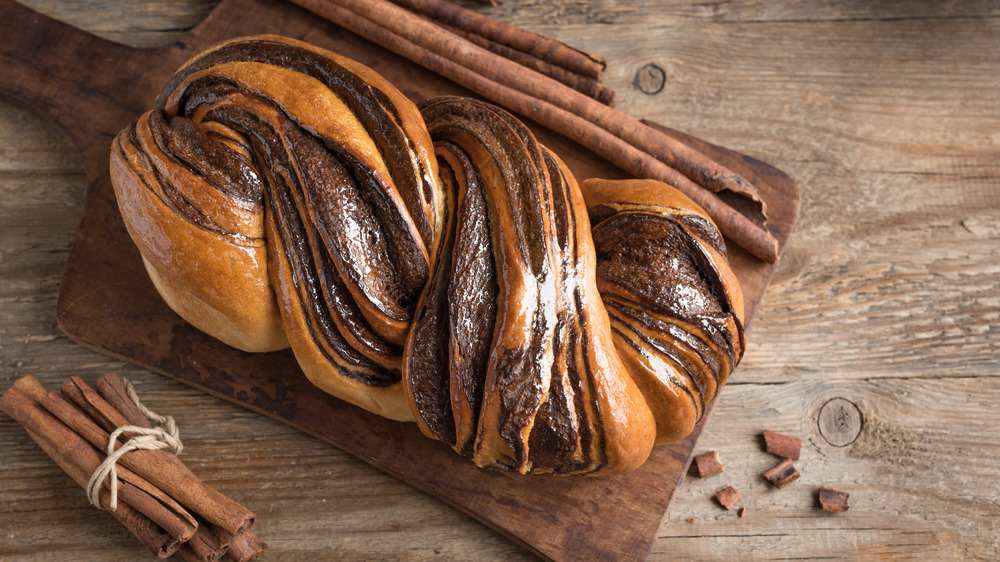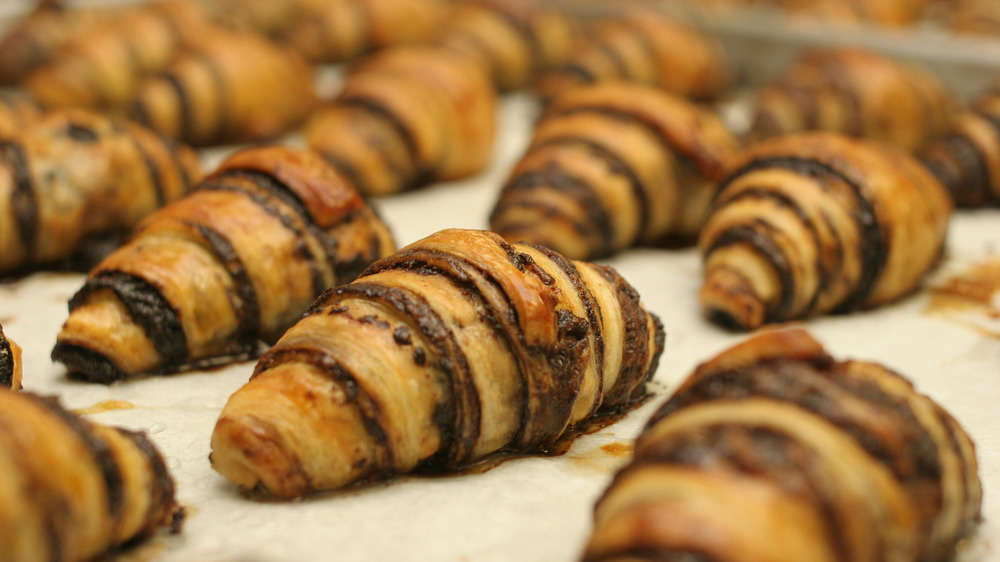What Is Rugelach And What Does It Taste Like?
If you grew up in a Jewish household, chances are you've seen one too many of these desserts at Shabbat meals. Now, the first step to enjoying rugelach properly is learning to pronounce it: Roog-eh-lach, with the ch pronounced with the phlegmy sensation in the back of your throat (via Merriam-Webster).
Breads Bakery in NYC counts rugelach among one of its best sellers and Eater described its pastry as "almost croissant-like, stuffed flaky cookies," which is pretty accurate, however, rugelach is less buttery and more dense than a croissant, and as a result of its process in which ingredients are rolled in between the layers until it forms a crescent, the sweet fillings mesh perfectly with that outer dough to create a sweet-savory combo that is hard not to like.
A dessert with so many complex steps must have a complex history, right? Let's dig into what inspired the creation of rugelach and how it came to become the popular treat it is today.
Where did rugelach come from?
While it may be tempting to assume rugelach is a cousin of the croissant, it more likely takes its roots from a time that predates the pastry. The website Aish explains the origins of rugelach seem to be taken from the Talmud itself, and its small stature seems to be a miniature version of another popular Jewish staple: babka.
Gimmee Jimmy's Cookies subscribes to another philosophy, mentioning that rugelach could actually be an ancestor of the Viennese kipferl. Though the brand agrees that unlike croissants, it was originally made with a yeast dough, but has evolved to now be made with a cream cheese dough instead. It also notes that there are two possible origins of the name, which has caused some dispute. The Yiddish word rog, which means twist, according to Gimme Jimmy's Cookies, and rugel, which means royal, both could be responsible for the linguistic roots behind rugelach.
What does rugelach taste like?
There will be some variance in taste when it comes to eating rugelach. While it may seem like a treat that defaults to being sweet, rugelach comes in all kinds of flavors. The Free Lance-Star describes rugelach as "little bites of sweet, nutty heaven — crispy and chewy at once, because of their cream cheese dough," and if that isn't enough to make someone's mouth water, it's hard to say what is.
Alternatively, there are some rugelach recipes that are less sweet, but not any less heavenly. As King Arthur Pastry notes, since rugelach's dough can be distinguished as a pastry or a cookie, they lend themselves to being molded in either direction based on their filling, and provide a wonderful recipe that proves just that. The site suggests trying a filling like pesto if you're leaning towards savory.
Ultimately, the next time you venture to a bakery with these as an option, or even want a little bit of a bigger baking challenge, these tiny desserts are worth your time and taste buds.


